Stylophone vs Stylophone Gen X-1: Which is Right for You?
A Stylophone is a miniature pocket synthesizer known for its unique, buzzy sound, played by touching a metal surface with a pen-like stylus. For decades, there was just one classic version, but now, the choice isn’t so simple, leading many to the Stylophone vs Stylophone Gen X-1 crossroads. The difference is all about what you want to do with sound.
The classic Stylophone is for playing, it’s perfect for tapping out fun, simple melodies with that famous retro tone. The Stylophone Gen X-1, however, is for creating. It’s a true mini synthesizer with extra knobs and controls that let you design and shape your own unique sounds, from wobbly basslines to sci-fi effects. It’s the choice between instant fun and endless experimentation.
This guide will break down the real story behind the Stylophone vs Stylophone Gen X-1. We’ll look at what each one does, who it’s for, and help you figure out which one you should actually spend your money on.
What’s the Big Difference Between Them?
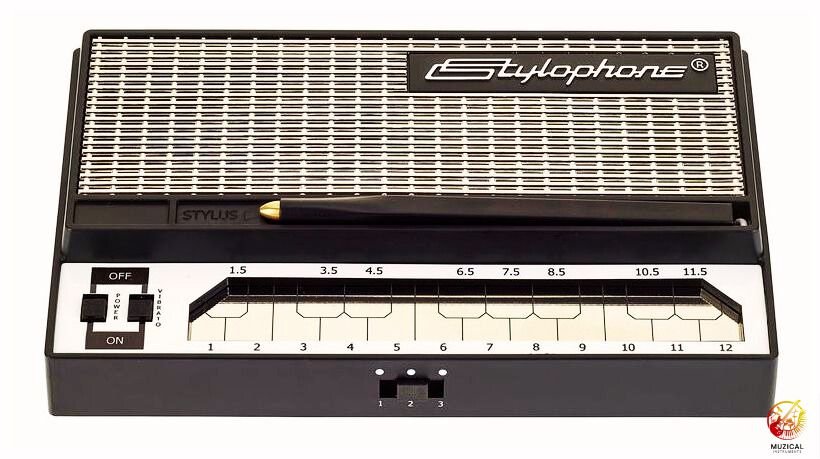
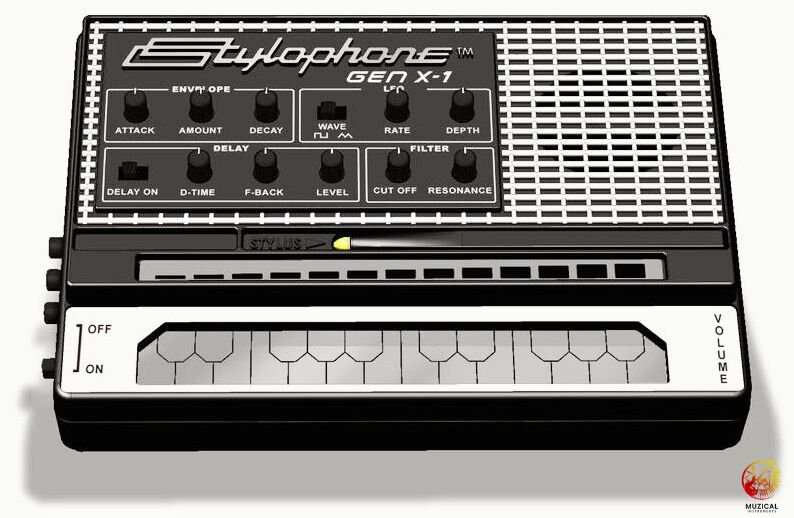
The biggest difference in Stylophone vs Stylophone Gen X-1 is their design purpose. The original Stylophone is a retro portable synthesizer with a small metal keyboard and stylus. It has three tone settings: bass, medium, treble and a vibrato switch. That’s it.
The Gen X-1 is closer to a full analogue synth. It still uses a stylus but adds an oscillator, envelope control, low-pass filter, LFO (low-frequency oscillator), delay effect, and tuning options. This makes it a compact sound design tool instead of just a novelty instrument.
| Feature | Stylophone | Stylophone Gen X-1 |
|---|---|---|
| Keyboard | Metal strip keys | Same stylus keys |
| Tone Options | Bass, medium, treble | Wide tonal shaping |
| Effects | Vibrato only | Delay, LFO, filter, envelope |
| Size | Very compact | Larger but still portable |
| Price | Budget-friendly | Higher, but still affordable |
| Use Case | Beginners, casual play | Producers, sound design |
In short: the Stylophone is a lo-fi instrument for quick fun, while the Gen X-1 is a flexible mini synth for deeper exploration.
Can You Make Real Music with a Stylophone?
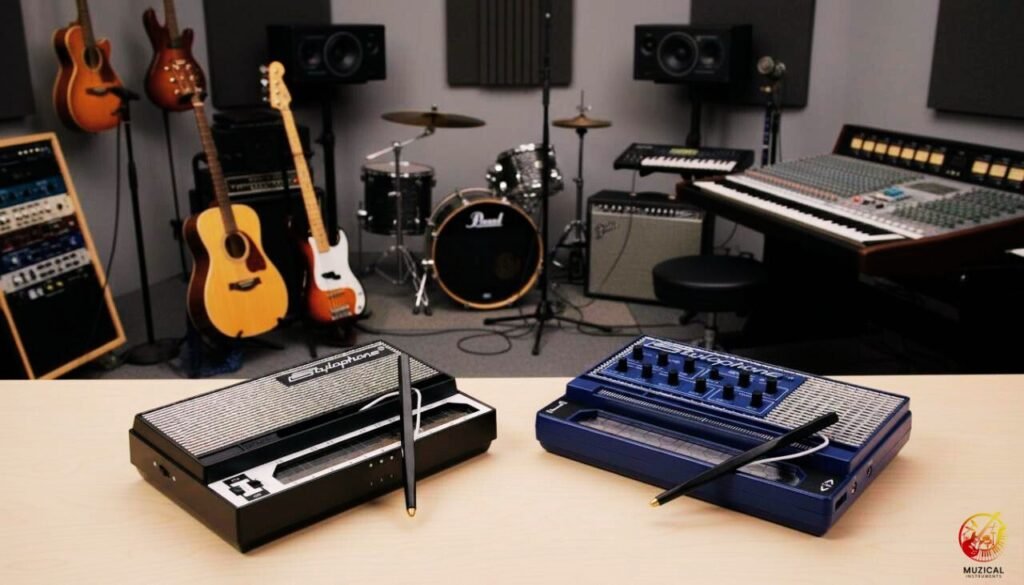
The answer is yes, you can absolutely make music with both, but in different ways.
The classic Stylophone has been used on famous records. The legendary artist David Bowie used its quirky, buzzy sound on his hit song “Space Oddity.” It’s perfect for adding a specific retro flavor or a simple melody to a track. It has a limited sound, but that’s part of its charm. Bands like Kraftwerk also used its simple electronic tone. It’s a great little instrument for a specific job.
The Stylophone Gen X-1 takes this to a whole new level. Because you can shape the sound so much, you can make basslines, weird sci-fi effects, and pulsing rhythms. It’s a real, tiny analog synthesizer. You can even plug it into other music gear, like guitar pedals, to unlock even more possibilities. I’ve used a Gen X-1 with an echo pedal to build up cool, spacey background music. It’s a serious creative tool in a small package.
Pro Tip: The Gen X-1 has a line out jack. Try plugging it into a guitar looper pedal. You can record a simple bassline with the sub octave on, then loop it and play a melody over the top. You just became a one-person electronic band!
Stylophone vs Stylophone Gen X-1: Which is Better for a Beginner?
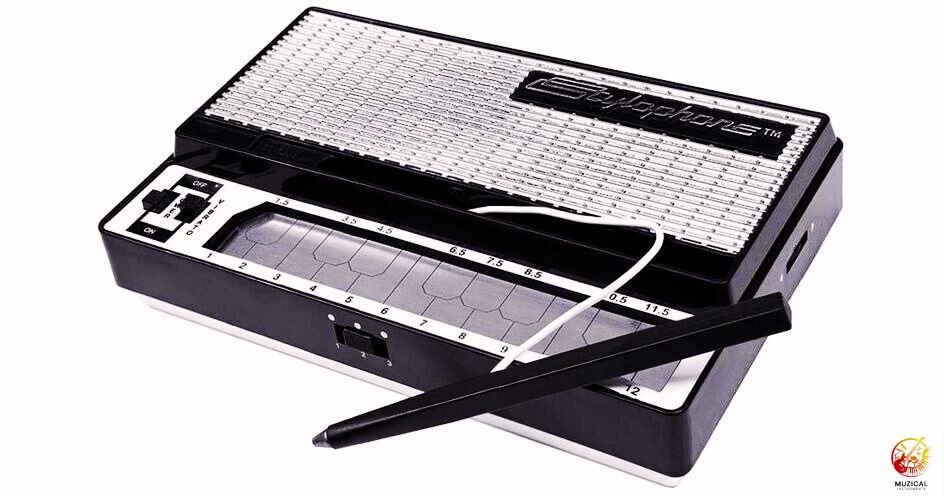
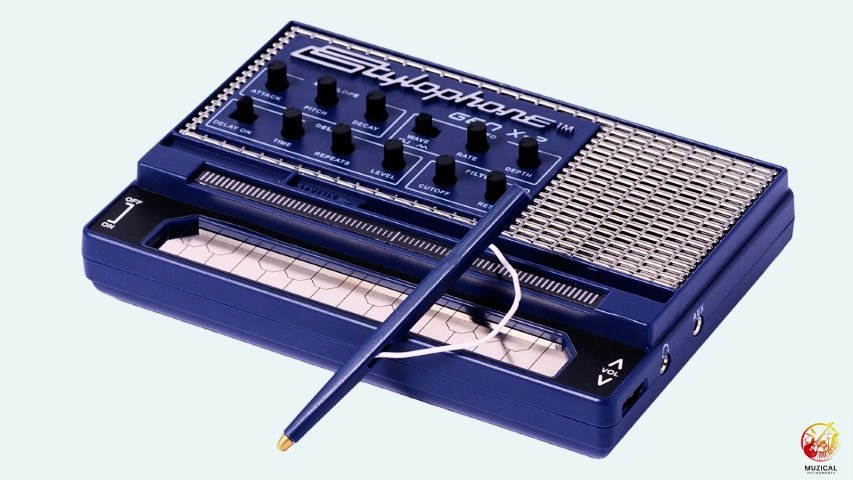
This is a great question, and the answer depends on what kind of beginner you are. This is a key point in the Stylophone vs Stylophone Gen X-1 choice.
If you are a total music beginner or are buying for a kid, get the classic Stylophone S-1. There is almost no learning curve. You just turn it on and play. It’s fun, not frustrating, and it’s a great way to learn simple songs without getting bogged down by complicated controls.
However, if you are a beginner who wants to learn how synthesizers work, the Stylophone Gen X-1 is one of the best starter synths you can buy. It teaches you the basics of sound shaping in a super fun way.
When you twist the “cutoff” knob and hear the sound get darker, you’re learning what a filter does. When you speed up the “LFO,” you’re learning about modulation. It’s a hands on lesson in sound design.
Here’s a simple chart to help you decide:
| If You Are… | You Should Probably Get The… | Because… |
|---|---|---|
| A total music newbie | Stylophone S-1 (Classic) | It’s simple, fun, and you can play tunes in seconds. |
| Buying for a child | Stylophone S-1 (Classic) | It’s tough, easy to use, and won’t be overwhelming. |
| Curious about synths | Stylophone Gen X-1 | It’s a perfect, low-cost way to learn the basics. |
| A musician wanting new sounds | Stylophone Gen X-1 | It’s a creative tool for making unique textures. |
| A fan of retro, lo-fi music | Stylophone S-1 (Classic) | It delivers that one iconic, buzzy sound perfectly. |
A Closer Look at the Gen X-1’s Cool Sound Controls
The biggest factor in the Stylophone vs Stylophone Gen X-1 showdown is all those extra knobs on the Gen X-1. They might look scary, but they’re easy to understand. Let’s break down what they do.
- LFO: This stands for Low-Frequency Oscillator, but just think of it as a “wobble” knob. It can make the pitch go up and down (vibrato) or make the sound pulse. You control how fast the wobble is.
- Filter: This is your tone control. The Cutoff knob makes the sound brighter or darker, like the tone knob on a guitar. The Resonance adds a cool “whistling” or “squelchy” sound.
- Sub Octaves: This is an awesome feature. It adds a lower note (or two!) below the one you’re playing. It makes the sound instantly fatter and is great for making bass sounds.
- Delay: This is just a simple echo effect. You can control how long between echoes and how many echoes you hear.
Here’s how they stack up side by side in the big Stylophone vs Stylophone Gen X-1 comparison:
| Feature | Stylophone S-1 (Classic) | Stylophone Gen X-1 | What This Means For You |
|---|---|---|---|
| Main Sound | 1 sound source | 1 sound source + 2 fat sub-octaves | The Gen X-1 can sound much bigger and deeper. |
| Sound Shaping | Just a vibrato switch | Knobs for LFO, Filter, and Delay | You can completely change the Gen X-1’s character. |
| Effects | None | Built-in echo effect (Delay) | The Gen X-1 can create spacey, rhythmic sounds. |
| Pitch Bending | No | Yes, with a cool sound strip | You can slide between notes like a guitar hero. |
Is the Gen X-1 Worth the Extra Money?
The Gen X-1 usually costs about twice as much as the classic model. So, should you spend the extra cash?
Honestly, if you just want to have a laugh and play the melody from your favorite old songs, then no. The classic S-1 is perfect for that. It’s cheap, cheerful, and does exactly what you expect. It’s a fantastic retro gadget.
But if you have even a little bit of curiosity about creating your own sounds, the Stylophone Gen X-1 is easily worth the extra money. The amount of creative power you get is huge. For a small price, you get a real analog synth that can make sounds for any kind of music. It’s a tool that you can keep discovering new things with. It’s an investment in your own creativity.
So, What’s the Final Word in the Stylophone vs Stylophone Gen X-1 Debate?
Choosing between these two isn’t about which is the best synth, but which is the best synth for you. One is for simple, nostalgic fun. The other is a tiny playground for your ears. The Stylophone vs Stylophone Gen X-1 decision is about what you want to do: play a tune or build a sound from scratch?
Your best bet is to listen to some videos of both. But more than that, think about what sounds more fun to you.
Do you want the simple joy of playing a classic, or the adventure of discovering a sound no one has ever heard before? Once you know that, your choice will be easy.
FAQ: Stylophone vs Stylophone Gen X-1
1. What’s the main difference between the Stylophone and the Stylophone Gen X-1?
The biggest difference is between playing and creating. The classic Stylophone S-1 is designed for playing melodies with its famous retro sound. The Stylophone Gen X-1 is a true mini-synthesizer that lets you shape and design your own sounds using extra knobs for effects like a filter, delay, and a “wobble” LFO.
2. Is the Stylophone a real instrument?
Yes, it absolutely is! While its simple design makes it fun like a toy, the Stylophone is a legitimate electronic instrument. It has been used on famous records by world-renowned artists like David Bowie and Kraftwerk for its unique and recognizable tone.
3. Can you play chords on a Stylophone?
No, you cannot play chords on a Stylophone. It is a monophonic instrument, which is a technical way of saying it can only play one note at a time. This makes it perfect for playing melodies, basslines, or lead synth parts.
4. Does the Stylophone Gen X-1 have a built-in speaker?
Yes, both the classic Stylophone and the Gen X-1 have a built-in speaker, so you can power them on and play anywhere. They also both include a headphone jack for practicing quietly. The Gen X-1 adds a line-out jack so you can easily connect it to an amplifier, recording interface, or effects pedals.
5. What does the sub-octave feature on the Gen X-1 do?
The sub-octave feature makes your sound much bigger and fatter. When you flip the switch, it adds a second sound wave one or two octaves lower than the note you are playing with the stylus. It’s a great way to create deep, rumbling bass sounds instantly.
6. Do Stylophones need batteries to work?
Yes, both the Stylophone S-1 and the Gen X-1 run on batteries, making them fully portable. The classic model usually takes 3 AA batteries, and the Gen X-1 takes 4 AA batteries.
7. What is the sound strip on the Stylophone Gen X-1 for?
The thin ribbon strip above the metal keyboard is for pitch bending. By sliding the tip of the stylus along this strip, you can make the note bend up or down smoothly. It’s a fun way to add expression to your playing, similar to bending a guitar string.
8. What is the most famous song that uses a Stylophone?
The most iconic use of a Stylophone in popular music is in David Bowie’s 1969 classic, “Space Oddity.” Its eerie, futuristic sound was perfect for the song’s theme and helped make the instrument famous.
